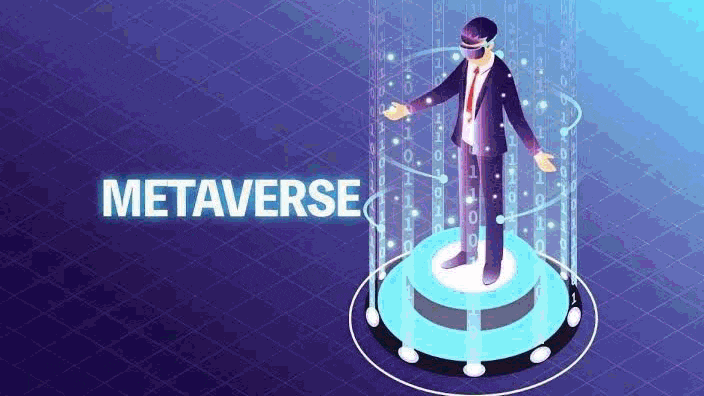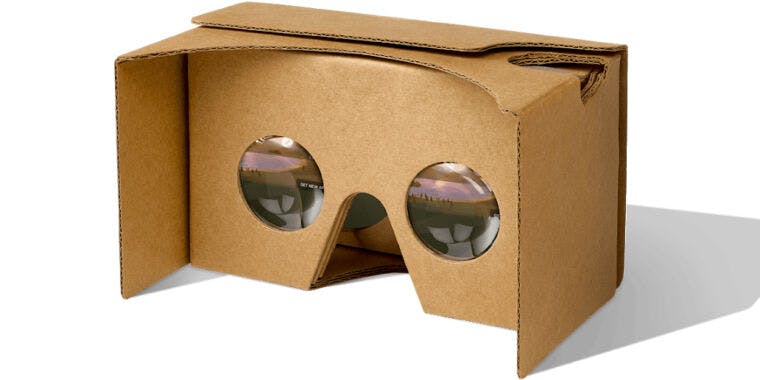Table of contents
- Defining the word "Metaverse"
- Apparently it's more than a video game?
- Is the metaverse a recent invention?
- Technologies used in the "Metaverse"
- So Why would Holograms Play a Key role in the Metaverse?
- Well, for the time being, how can I receive access to the Metaverse?
- Why is everybody referring about the METAVERSE at the moment?
- Now, would I be in the metaverse within several years?
“Technology is best when it brings people together." -- Matt Mullenweg, Social Media Entrepreneur
What does the word "Metaverse" mean? Is this the internet's dismal future, based on science fiction? Or just a word from the old books? Or is it merely a fancy way of classifying prolonged reality (XR), which incorporates augmented, virtual, and mixed reality technologies?

There really is no dodging the internet's beloved buzzword: the "Metaverse," even if you've seen Mark Zuckerberg's spooky virtual replica as he publicly announced Facebook-rebranded-as-Meta, live concerts in the engaging Fortnite universe, or a digital art gallery in Decentraland. "Metaverse" is a hot button topic in the IT, business, and finance realms right now, and like other buzzwords, its meaning is hazy, debated, and moulded by the goals of those who use it.
Enough with the casual conversation; let's get down to business!
Defining the word "Metaverse"

Discussing the metaverse reminds me of conceptualizing the internet in the 1970s and 1980s. As the foundations for the new mode of communication were being constructed, conjecture arose about what it would look like and how it would be used. Everyone was talking about it, but few people actually comprehended what it was intended for or how it would function. In retrospect, things did not come out quite as some had hoped.

Although the term "metaverse" has been bandied around for a few years, it was first invented by author Neal Stephenson in his 1992 sci-fi novel Snow Crash. The metaverse, as per Stephenson's novel, is an all-encompassing digital environment that lives in parallel to the real world. Experts aren't sure yet if the metaverse IRL can grow into anything comparable in 2022. "An interconnected network of 3D virtual worlds." Users traverse the metaverse using their eye movements, feedback controls, or vocal instructions, which are retrieved through a virtual reality headset. The headset refers to the user, promoting what is known as "presence," which is achieved by simulating the physical experience of being present.

Even though this explanation does not clearly articulate the metaverse, it does express why everyone believes it is so vital. This term isn't about a futuristic vision or a cutting-edge technology. Rather, it looks to the past and to now-ubiquitous technology such as the internet and cellphones, and anticipates that the metaverse will be expected to replace them. Can you vividly recall how cellphones changed technology, the economy, and society? The metaverse is supposed to be a similar watershed, and many firms are racing to be first.
Apparently it's more than a video game?

Whereas metaverse is substantially bigger than a video game, it implies that the gaming world has indeed embraced its most basic form. Consider an online shooting game like Fortnite, in which players create their own avatar and interact with other players' avatars while accumulating virtual cash to unlock clothes for their avatar.

Second Life, a simulation game that allows users experience virtual reality in which their avatar may buy, dine, shower, and do everything they will in real life, might be the closest extant rendition to the envisioned metaverse.

Microsoft purchased the virtual reality business AltspaceVR in 2017 and has since integrated metaverse elements like virtual avatars and virtual reality meetings into Microsoft Teams. Workplace productivity, interactive learning environments, e-commerce, real estate, and fashion were amongst the major application areas for metaverse technology.
Is the metaverse a recent invention?

In a nutshell, no. We've previously proven that the terminology has been existing for 30 years, and not merely in fictitious form. For a long time, it has been an element of business future aspirations. In during initial VR boom in the 1990s, Sainsbury's, a British supermarket company, created a VR shopping demo that looks suspiciously similar to a Walmart commercial from 2017. Metaverse-like virtual worlds have thrived here for as long as their literary equivalents, beyond marketing puff pieces and concrete evidence demos. Anyone who's ever monitored online gaming for the last few decades will identify hype articles about individuals getting engaged in the metaverse.
In fact, result is actually more like Second Life, which is chaotic and often filthy. If people are given the freedom to create a world without boundaries, they will either create a branding possibility or a fetish dungeon. That should indeed act as a caution or an opportunity for future metaverse developers.
Technologies used in the "Metaverse"
Hardware technology in use:-

General-purpose computers and cellphones, along with augmented reality, mixed reality, and virtual reality, are all feasible access points to the metaverse. The focus on virtual reality technology has hampered metaverse development and adoption. The paucity of high-quality graphics and mobility is due to the limitations of portable technology and the necessity to balance cost and design. Higher-performance sensors are linked and generally bulky, whilst lightweight wireless headsets have battled to approach the retina display pixel density demanded for visual immersion. Another impediment to mass acceptance is cost, with consumer VR headsets costing anywhere from $300 to $3500 by 2022. Current hardware design is focused on overcoming the shortcomings of VR headsets, sensors, and haptic improved technologies immersion.
Software technology in use:-

Source:- Universal Scene Description
There hasn't been universal recognition of a common technical definition for metaverse implementations, and extant implementations are mostly based on private technologies. Concerns concerning transparency and privacy have made interoperability a prominent challenge in metaverse development. There have been various initiatives to standardise virtual environments.
Pixar produced the Universal Scene Description protocol for 3D computer graphics interchange, which is supported by Blender, Apple's Scenekit, and Autodesk 3ds Max. NVIDIA, a technology corporation, said in 2021 that it would use USD as the currency for its metaverse development tools.

Source:- OpenXR
OpenXR is a genuinely free standard that enables users to access virtual and augmented reality devices and activities. Microsoft used it for HoloLens 2, Meta Platforms used it for the Oculus Quest, and Valve used this for SteamVR.
So Why would Holograms Play a Key role in the Metaverse?

So when internet originally came out, it was preceded by a slew of technological breakthroughs, such as the capacity to connect computers across long distances or the ability to link one web page to another. Such technological capabilities served as the foundation for the abstract structures we currently associate with the internet: websites, applications, social networks, etc that relies on them.

Despite gesture digital avatars, which are now glitchy but might be developed to achieve, there is no janky form of producing a three-dimensional image appear in mid-air lacking strictly controlled settings. Another of Meta's demonstrations showed players hovering in space—is this person attached to an immersive aerial apparatus or simply sitting at a desk? Is the person depicted by a hologram utilizing a headset, and if so, how does their face being digitised? At occasions, a person acquires virtual goods but also seems to grip the objects in their real hands.

The glitz and glam of VR and AR also masks the more routine ways in which our present, linked digital environment may be upgraded right now. It would indeed be trivial for tech businesses to innovate, presume, an open digital avatar standard, a category of file that includes characteristics you would perhaps access into a character creator—like eye colour, hairstyle, or clothing options—and allow you to take that data anywhere, to be understood however a game engine deems necessary. There is no need to design a more comfortable VR headgear for this purpose.

Well, for the time being, how can I receive access to the Metaverse?

Although there is no one portal to the metaverse at around this time, experts recommend engaging in some technology to fully submerge yourself in the experience. Budget, this could range from the $10 Google Cardboard to the $300 Oculus Quest 2 headgear or even the increased $999 Valve Index VR. As a reaction, several tech titans are delivering a great deal of experience, from gaming and virtual offices to live entertainment and real estate. Decentraland, Axie Infinity, Horizon, Sandbox, Fortnite, and Roblox are implementations of these kind of systems.

Albeit using your smartphone, tablet, or computer to connect the metaverse will strip away from the immersive experience, it's a perfect method to evaluate the waters just to see what the excitement is about.
Why is everybody referring about the METAVERSE at the moment?

In recent years, a number of circumstances have propelled it to the forefront of the IT industry's thinking. One is that a few of technologies significantly connected to metaverse visions have emerged. Virtual reality, which was still in its infancy when Stephenson penned Snow Crash in the 1990s, is now, well, a reality. There are decent commercially available headsets, including standalone wireless devices like the Quest. The purchase of Oculus by Facebook in 2014 was an early indicator of where Zuckerberg saw his company going.
The other is blockchain, the unfathomable and energy-intensive technology that has empowered cryptocurrencies and NFTs. Within the last year or two, NFTs have become an addiction for crypto enthusiasts, snake-oil marketers, suggestible CEOs, and (surprisingly) some elements of the art world. They may enable ownership of virtual objects and real estate inside this metaverse.

The coronavirus epidemic, which has profoundly transformed lifestyles throughout the world, is also a crucial contributor in the metaverse movement. With users spending so much time in Zoom meetings for business and people want to experience more colourful and vibrant surroundings without leaving the security and safety of their homes, it's natural for digital firms to investigate for solutions to gain on the situation by connecting these two necessities.

Now, would I be in the metaverse within several years?

According to some scientists, "a substantial number of individuals will be in the metaverse in some form" by 2030. Notwithstanding its enthusiasm, the notion still requires a lot of development. The first hurdle will be obtaining the necessary equipment. Then there's the concern of interoperability, which entails being able to exchange virtual objects like clothes or automobiles from one platform to another.

Many scientists feel that this is essential for the metaverse to function. Aside from determining who will operate as the police out here, there'll be legal and business problems. Furthermore, there is no chance that individuals will desire to spend time in the metaverse.

I believe that, whether you like it or not, we will be a part of the "Metaverse" in the near future, because some technologies are designed to be embraced! I'm not sure how it will make our lives easier, but one thing is certain: mankind has developed numerous alternative methods to make labour easier and more convenient. That's all for now; I hope you've grasped the notion of "Metaverse". Happy Hunting!

